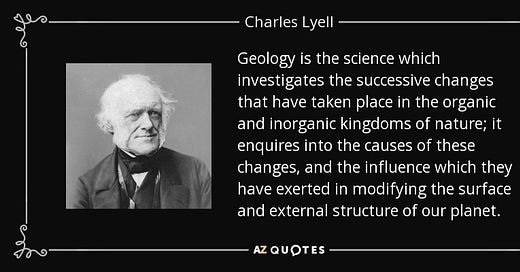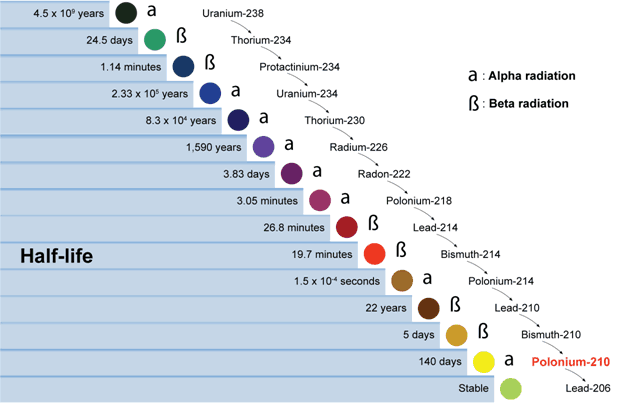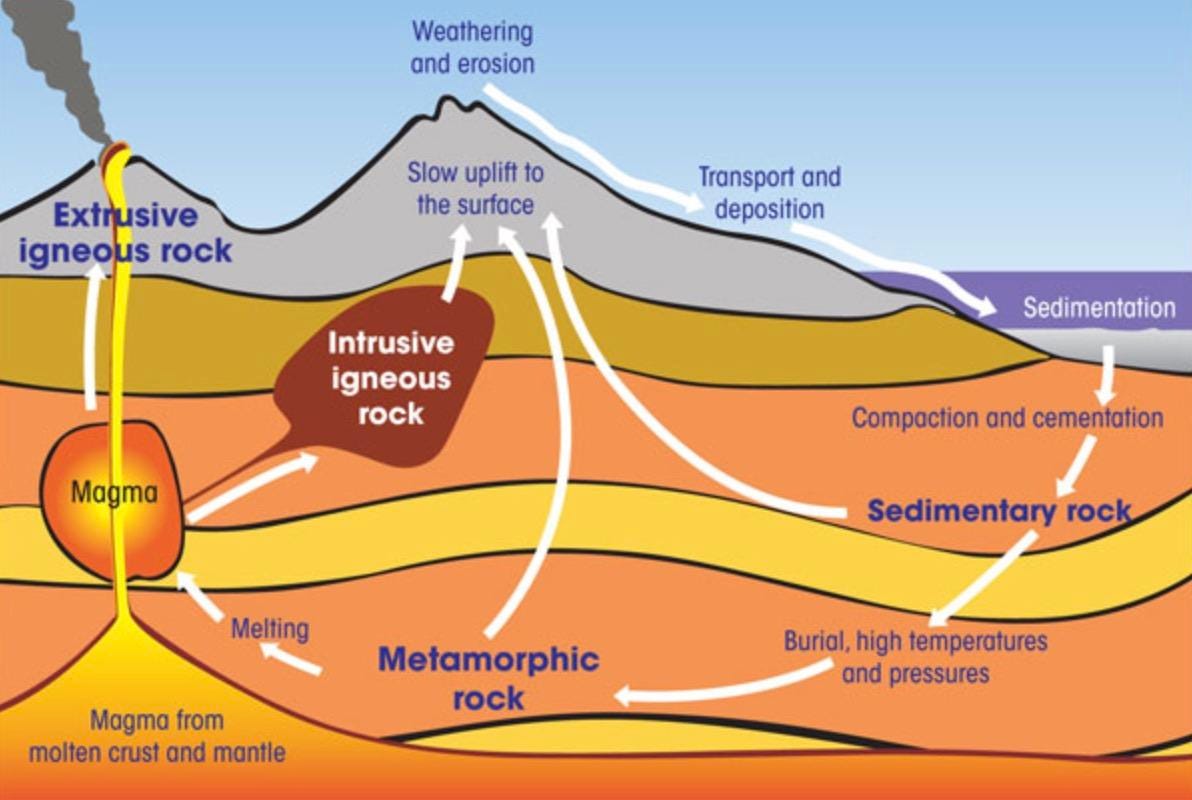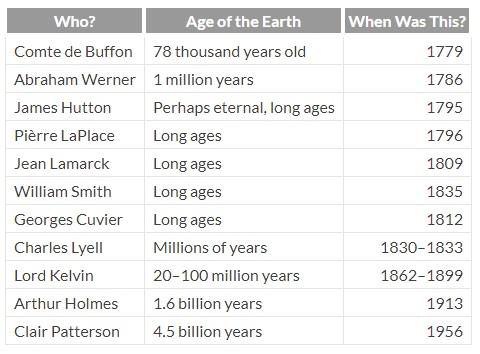Scientism and Long Ages. Isotopy and Isochrony dating suffer from a long litany of issues. The Earth is not billions of years old.
A Church of arcana where observations are ignored for pre-determined conclusions to fit a religous framework called 'science'.
(How much of a ‘science’ is geology really? When you investigate the telemetry and metrics applied to ‘aging’ artefacts the sceptical reviewer is left unimpressed.)
In a previous article radio-carbon testing as a tool for measuring ‘long ages’ was analysed, and any close examination reveals C14 dating to be crude and unscientific. Radiocarbon dating does not support long ages. Yet the ‘science’ claims that such techniques are ‘gold standards’ in chronometry and age identification. It is worth recapitulating the issues with radiocarbon dating before moving on to two other problematic areas for Long-Agers, namely that of isotopes and isochrony-dating. (The next article will apply these 3 methods to the Grand Canyon and other formations which reveals the gross inaccuracy and massively exaggerated long-age dates).
1) C-14
C-14 dating is premised on the following:
C-14 comes from the atmosphere and becomes part of the food chain.
Carbon 14 dating is only used on material that was once alive. Bones, flesh, plants, and any remains that are not entirely fossilized into rock are targets.
Once a plant or animal dies, it stops ingesting new C-14. Existing C-14 in the body continues to decay, reducing the percentage of C-14 to C-12 in the physical remains.
After pulling up a sample, and assuming no contamination occurs from the handlers, a sample’s percentage of C14-to C12 is measured, compared to the atmosphere’s percentage and the time since death is then calculated.
Some obvious problems with C-14 dating which are largely ignored
The above process is holed with assumptions and basic design flaws. C-14 dating cannot give long ages of anything.
C-14 accuracy in dating is very limited, maybe up to 25.000 years or so, given that its half-life of only 5,730 years. It can’t age artefacts to be ‘millions of years old’.
Long-Agers are dating samples of rocks to be millions of years old, when they contain microscopic fragments of shells, bone, graphite (wood) and other organic materials. This is impossible.
Coal is decomposed or metamorphosed plant remains crushed under great pressure which presents another huge conundrum for uniformitarians (what caused the conditions to make coal?). Coal samples from deep mines have been dated (or assumed to date) from millions of years ago, yet every single sample contains and will contain based on its composition, C-14. How is this possible?
Diamonds are very dense and not susceptible to internal contamination. Long Agers routinely ascribe ‘billions of years’ for diamond formation (another issue they cannot explain, namely, the heat, the pressure, the construction of such hard carbon-based forms). Yet every single diamond sample will contain C-14 – how can they possibly be ‘billions of years old’?
Dragon or dinosaur tissue and bones have also been dated along with petrified wood, again from locations across the world. Every single sample contains and will contain, C-14. These artefacts cannot be millions of years old. Soft tissue and DNA (very unstable) also do not last millions of years.
The above is observational science. You can only twist these observations into millions and billions of years in age if you follow a philosophy and religious framework which demands illimitable ages as the answer.
2) Rocks of Ages
The accepted theory about rock creation is that igneous rock is formed when it first cools down from a molten or semi-molten state, which may include a variety of elements, including radioactive ones. Within this cooling period radioactive elements decay from heavier larger atomic elements (parent) into smaller atomic elements (daughter) that are more stable.
An example is uranium (U) which decays into lead (Pb), a process which was confirmed by 1900 (Marie Curie discovered Polonium, see figure below). So, for the past century and more, there is observational science on the decay rate from uranium to lead and this has allegedly been proven stable.
Due to the assumed ‘stable rate of degradation’ (rates are in the above table), the amount of parent / daughter elements present today in a rock sample, can be used to calculate backwards to the estimated age of when the rock was first formed. This method is used only on metamorphic and igneous rocks – not sedimentary rocks (which are rocks laid down by water, where fossils are primarily found). However, this technique of radio-dating using uranium to lead decay (or back up the chain from lead), is based on a series of assumptions, which greatly qualify any findings:
Assumption 1: Geology is a closed system. A similar problem exists for the Klimat Cult. The earth is not a closed system, and neither is its geology. This is a big problem. How would anyone know if there has there been contamination into the rock of either extra amounts of parent or daughter elements? What if extra lead entered the rock (hydrothermal explosion), or contamination occurred affecting lead and uranium?
Assumption 2: The decay rate has not changed. A 100-year sample of decay rates appears to be rather inadequate when talking about millions of years. No one knows if the rate of decay has changed in the past 1.000 or 1.000.000 long age years. To be honest, one should doubt the given and accepted decay rates, since finding confirmation of said rates is very difficult.
Assumption 3: There is no lead in the rock when it is first formed. This does not seem valid, given that hyrdothermally produced lead is found in all 3 rock types. To assume for example, that a rock starts only with uranium and no Pb (lead) is a gross simplification and likely incorrect. (Isochron dating, see below, which relies on multiple rock samples, is an attempt to correct this, but still has underlying assumptions based on 1 and 2 above.)
Long Agers will scoff at the above and wave their hands. ‘The present is the key to the past’ they will repeat, invoking Saint Charles Lyell the lawyer who helped popularise some rather old ideas about the Earth’s longevity. At the very least these assumptions should provide enormous caveats when rocks are assigned ages using isotopic analysis given the known issues. But that is hardly ever done.
3) Rock around the Isotope Clock
Long Agers point to isotopes to support radio-carbon dating long ages. Isotopes are elements that have the same atomic number, but different mass numbers (protons are the same, the number of neutrons differs). But if long age C-14 dating is invalid science, why should isotope testing be any different? Some varieties of isotopic analysis are used in conjunction with carbon dating, many are used independently. Few of the results match each other.
Isotopic radiometric dating methods were developed to give ages of millions or billions of years for the 3 varieties of rocks (igneous, sedimenatary, metamorphic). This appears to be the purpose and design of the isotopic technique, regardless of observational science. These calculations, unlike carbon dating, use the relative concentrations of parent and daughter products in radioactive decay chains. They are also riven with assumptions and errors.
In dating rocks, parent elements are used and compared to daughter element patterns over time. For example, potassium-40 decays to argon-40, uranium-238 decays to lead-206 via other elements like radium (see figure below), uranium-235 decays to lead-207, rubidium-87 decays to strontium-87 and so on. These processes of degradation are applied to igneous rocks to give a time of ‘birth’, dated back to the solidification of its material, or its supposed original age of formation. It is highly conjectural.
The isotope concentrations can indeed be measured quite accurately, but isotope concentrations are not dates or a time clock. The two are completely different concepts. To derive ages from such measurements, unprovable assumptions are forwarded:
Decay rates have always been constant (this can only be true if unchanging processes are assumed, and rather singular experiments ‘proving’ the decay rate are simply accepted as fact).
The initial conditions are known (for example, that there was no daughter isotope present at the start, or that we know the quantity which was originally present).
Systems are closed or isolated so that no parent or daughter isotopes were lost or added (again based on uniformitarian assumptions).
None of the above are truly valid hypotheses and are largely incorrect making isotopic testing a-scientific. Massive dating errors prove this.
4) Isochrons, Rocks and hard places
Other techniques, such as the use of isochrons, which were developed to plug the gaps in isotopic theory, make different assumptions about starting conditions, but their problems are as legion as that of C-14 or isotopic testing. In essence with ischronic testing, the data is selected according to what the researcher already believes about the age of the rock, often using C-14 (if carbon material is encased), or isotopic testing as guidelines.
The isochron technique involves collecting a number of rock samples from different parts of the rock unit being dated. The concentration of a parent radioactive isotope, is graphed against the concentration of a daughter isotope, for all the samples. A line is graphed which represents the ratio of parent to daughter. From this a ‘date’ is estimated. (An example would be rubidium-87 graphed against strontium-87 a daughter isotope, comparing the ratio to a stable isotope of strontium-86. Obviously there are plenty of assumptions at work in this method).
Many studies have looked at isochrony accuracy and found it wanting. An example is the helium retention in zircon crystals from the RATE project, much derided by the establishment which cannot counter any of its decade long inquiries or observations but delight in calling the researchers various names. In particular the focus of this project was on the uranium-lead-helium production process. What it found was quite startling.
When uranium decays to lead, a by-product of this decay is the formation of helium, a very light, inert gas, which readily escapes from rock. When there is drilling into deep granite rock, crystals or ‘zircons’ are obtained, and these contain uranium which has partly degraded into lead. By measuring the amount of uranium and ‘radiogenic lead’ in these crystals, the theory is that we can calculate age. If the decay rate of U to Pb has been constant, the geological age of the granite sample should be in a range from 125 million to 1.5 billion years, which is the ‘consensus’ age of the Earth’s granite. However:
There is a significant proportion of helium still inside these zircons. There should not be any helium left, if the age of the rock was millions or billions of years old.
Various labs have confirmed that the helium does indeed seep out very quickly over a wide range of temperatures. In fact, results show that because of all the helium still in the zircons, these crystals (and since this is Precambrian ‘basement’ granite, by implication the whole earth) could not be older than 14,000 years.
Wow. Whatever the real age of granite and the Earth is, no one really knows, but if the above is valid, granite cannot be ‘billions’ of years old. This comports with both C-14 and isoptopic testing of rocks and layers, neither of which can prove long-ages. One can hear the wailing, the rending of clothes, the gnashing of teeth and the vitriol emanating from the Long Age cult.
In order to keep this short, the next article will have a good look at the Grand Canyon and some other long-age ‘facts’ which when analysed, don’t hold up to scrutiny. The Grand Canyon for example, is not ‘billions of years old’.
5) A Rock Wall of Uniform ‘Science’
Long age dating is riven and saturated with issues, assumptions and dates which do not support observational science. It hardly seems to have ‘evolved’ since the 19th century in its tooling, accuracy or veracity. It is quite clear that the Earth is not ‘billions’ of years old, energy systems and complex ecosystems would not last much longer than a few thousand generations in reality. But even to suggest that the ‘science of geology’ is completely crackers in its dating processes invites vituperation and violence.
(When will trillions of years in age be rolled out? The ages get longer and longer every century)
If you use the Internet as your library of choice you are met with a wall of endless ‘confirmations’ of various ages and vicious, emotional denunciations of any studies or personalities who disagree, an echo of the Korona fascism’s censorship and Gestapo tactics to crush dissent. If you tour a canyon or a cliff face anywhere in the world, millions if not billions of years are pounded into the visitor as facts, confirmed by ‘science’ and immutable in veracity.
The Bottom Line, a Church of Dogma
Very few people bother to assess if any of the long-age measurements are true or valid. So here we are with the Church of Geology and $cientism.
Arcane maths, equations and theories riddled with assumptions and manipulations, all obscure and hidden. No dissent and no inquiry in the common vernacular is allowed, especially by those outside the priesthood. No objections or deviations from the narrative-mean will be funded, printed or debated. Inaccurate measurements or metrics which offend common sense are ignored.
The highly specialised priests and oracles of ‘geology’ are busy with their rituals and rites, their incantations and incense, robed and splendid, issuing sermons with precise dates, using a language few understand, all based on flawed theories and metaphysics. And all of this by looking at rocks. Good grief.
$cientism. Follow the philosophy and the money.
=======
Some Sources you should never read
McKee, E. H. and D. C. Noble, 1974. Rb-Sr age of the Cardenas Lavas, Grand Canyon, Arizona. In, Karlstrom, T. N. V., G. A. Swann, and R. L. Eastwood (eds.), Geology of northern Arizona, pp. 87–96. Geological Society of America, Rocky Mountain Sectional Meeting, Flagstaff.
Larson, E. E., P. E. Patterson, and F. E. Mutschler, 1994. Lithology, chemistry, age and origin of the Proterozoic Cardenas Basalt, Grand Canyon, Arizona. Precambrian Research 65:255–276.
Hammond, J. G. and J. L. Wooden, 1990. Isotopic constraints on the petrogenesis of Proterozoic diabase in Southwestern USA. In, Parker, A. J., P. D. Rickwood, and D. H. Tucker (eds.), Mafic dykes and emplacement mechanisms, pp. 145–156. Rotterdam: Balkema.
Heaman, L. M. and J. P. Grotzinger, 1992. 1.08 Ga diabase sills in the Pahrump Group, California: Implications for development of the Cordilleran Miogeocline. Geology 20:637–640.
Howard, K. A., 1991. Intrusion of horizontal dikes: Tectonic significance of Middle Proterozoic diabase sheets widespread in the upper crust of the Southwestern United States. Journal of Geophysical Research 96:12,461–12,478.
Austin, S. A., 1994. Are Grand Canyon rocks one billion years old? In, Austin, S. A. (ed.), Grand Canyon: Monument to catastrophe, pp. 111–131. Santee, California: Institute for Creation Research.









Thanks - excellent information and useful links. Long have I doubted this talk of the age of rocks. We were better off in the age of biblical interpretation, not much but a bit, the Romans had a right such matters were left to the Gods. Many of them. How lovely to hear a scientist say " we do not have a clue" rather than the obligatory " we do not fully understand". Another area that you might have looked into is what is a fossil? I have never been able to find a clear definition. I have no idea what a fossil is. Does anybody? Great if you could look into all this. Another one is what is electricity? I'd love to know. Another one is how exactly does radio work. I have tried to find out but nothing I read makes any sense. I have a long list of these. Great to read your stuff and always enjoy a new post. Have you condensed it all into a book? My view at this stage is that science is largely the source of most of the problems that we have. Reading about Rome I can see that they were able to engage in human life without mass poisoning or mass pollution and without damaging nature around them. Much much much better. Science and technology have ruined human things. Big shame.
Thanks David. Dating rocks and geology in general, have little relation to real science. They are littered with unproven assumptions and formed by world views. A former Darwinian wrote that isotopic testing applied to the atmosphere gives an age of 10.000 years. But that is the wrong answer so it is just dismissed. Great topics you bring up. Fossils can only be formed in a water engineered catastrophe and as you know, they have nothing to do with oil and gas. I have done a lot of work within the wireless spectrums, very complicated subject but little thought of. Radiation exposure is a huge health issue and a good reason to oppose 5G. Electromagnetism explains much better the ordered structure of the universe than gravity, which is a very weak force. Agree with you that Scientism or the religion of science, whatever that means, at the exclusion of the rest of life, is our undoing. According to the 'science ' 95 per cent of matter is invisible and unknown, meaning that we only comprehend 5% of our physical world. This says nothing about the immaterial, the spiritual, the soul, beauty, love, culture or what makes life worthwhile. So much for reason.